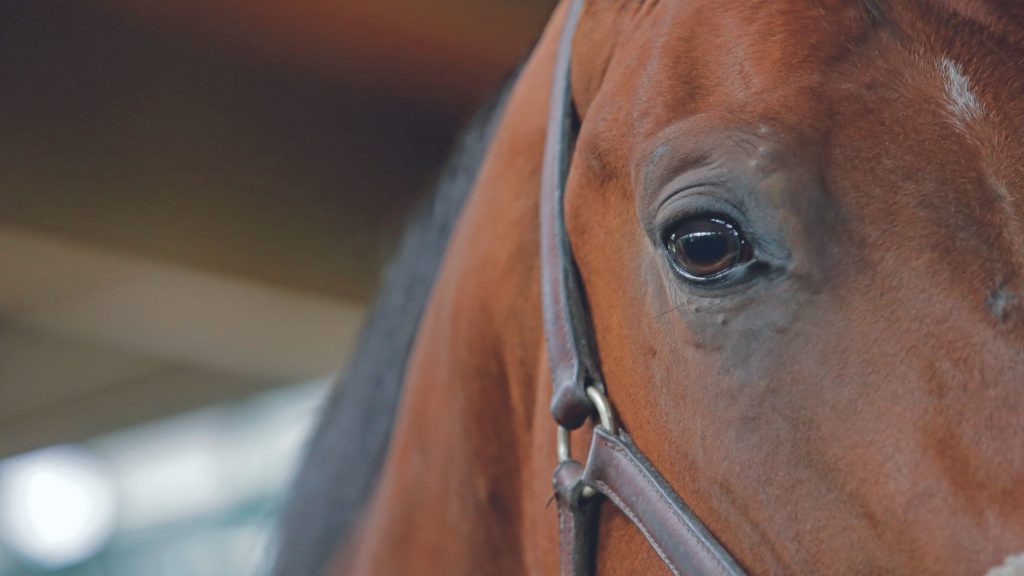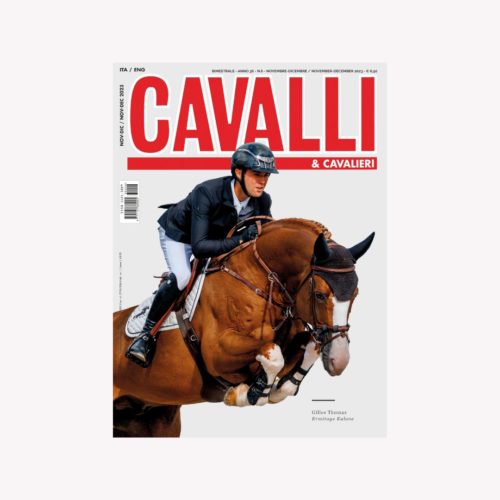by Dott. Emanuela Valle, Department of Veterinary Sciences – University of Turin
Delving into the analysis of the extraordinary equine vision reveals details of sensitivity, adaptability, and precision that shape the very essence of a horse’s perception. In this article, we delve into the realm of equine vision, unveiling its incredible capabilities and the crucial role that vision plays in the lives and performances of these majestic creatures.
The anatomy
The horse’s eye is very big. In comparison to other animals, horses have the biggest eye to body ratio.
The pupil has an elliptical shape, and it is in a horizontal position. Like in humans, it contracts in bright light and becomes larger when it is dark. If a flashlight is positioned in front of the horse’s eye, it becomes reflective. This is because it has a light amplifier called tapetum lucidum.
The axis of the pupil rotates depending on the position of the head, so it’s always parallel with the line of the horizon.
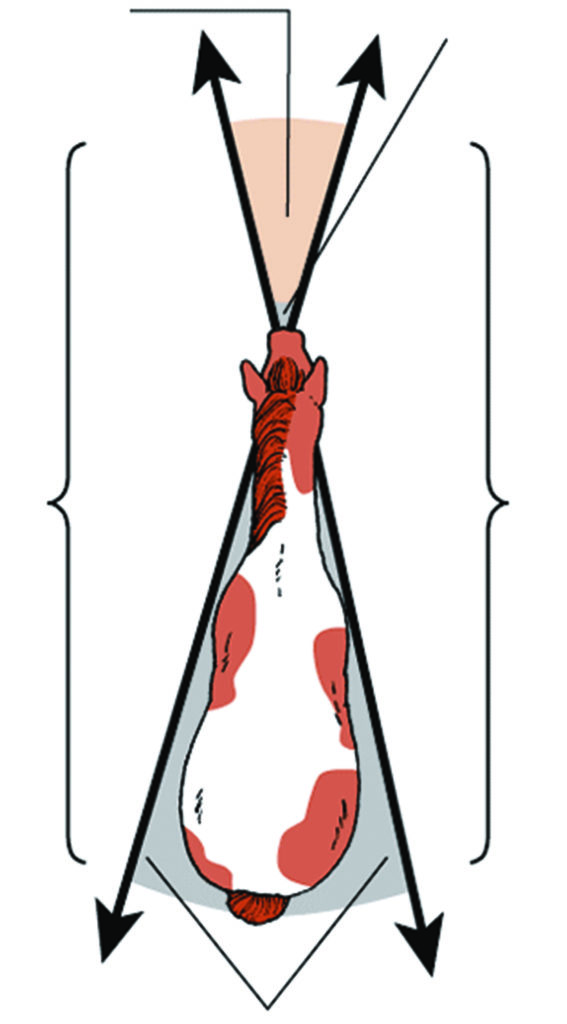
Panoramic vision
The horse’s eyes are located on the side of his head, which means he can see all around. Horses have monocular lateral vision, which allows them to see on a 350 degree angle. The front vision is binocular and covers an area of 65 degrees. They also have two blind spots. When the horse is still with his neck completely straight, the blind spots are behind him in the area where the rider sits, as well as in front of his nose.
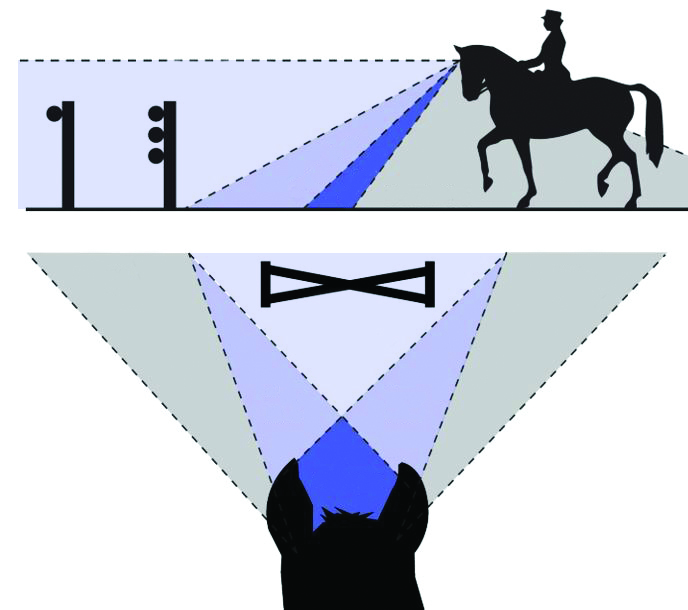
Over the jump
When we observe a horse as he approaches a fence, we will notice he raises his head higher. This allows him to use his binocular vision with both eyes and gauge the height of the jump. Once he’s close to the fence and he begins to take off, he won’t be able to see the jump. For this reason, we must remember that when a horse is jumping over the fence, he cannot see it, and he performs with the memory of seeing the jump a few seconds before. Sometimes horses try to raise their head even more at the very last minute to be able to sense what they are about to jump. The human eye, thanks to the frontal position, utilises binocular vision continuously and this allows it to better gauge the distance to the jump. This is not possible for the horse.
Too much light
A very bright day is not ideal for the horse’s vision; lower light conditions are preferable to him. The horse is so sensitive to bright light that Mother Nature equipped him with natural sunglasses, called corpora nigra. These are tiny vascular structures positioned on the upper area of the pupil that act as anti-glare glasses. We must remember that a horse that works on a very bright white arena sand will find it very dazzling and he will struggle to adapt to the sudden change of light intensity. For this reason, when a horse walks out of his stables or is loaded on a horsebox he will need a few seconds to adapt to the change in light.
Bigger
The horse does not see close objects the same size that we see them, but 50% bigger. The big eye dimensions as well as the ample retina surface allow him to magnify the image.
The movements
The horse can sense even the smallest movement. For this reason, he is able to capture our emotions and even read the expression on our face. He can see even the smallest object, not really because of its shape but mainly because of the change of colour and its movement especially when positioned on the ground. This is why he can spook at a cat that suddenly moves far away but he doesn’t have the same reaction when objects are positioned on their withers. It is very rare a horse will spook when he sees a flag positioned around a show arena.
Accomodation
The mechanism that allows the eye to focus on a specific object is not very well developed in a horse. For this reason, he needs to move his head to allow the light to enter the area of his eye where the nerve endings are located. This is the reason why he needs to raise his head on the approach to a jump and he needs to tilt it to be able to see objects very close to him. The horse is considered hyperopic by nature, even if he’s never really able to focus and his vision is not 100% clear.
Keeping an eye out
All horses are always keeping an eye out and are ready to react to something happening, they look at their surroundings carefully to assess possible danger. Sight is the most acutely developed sense, which allows them to protect themselves.
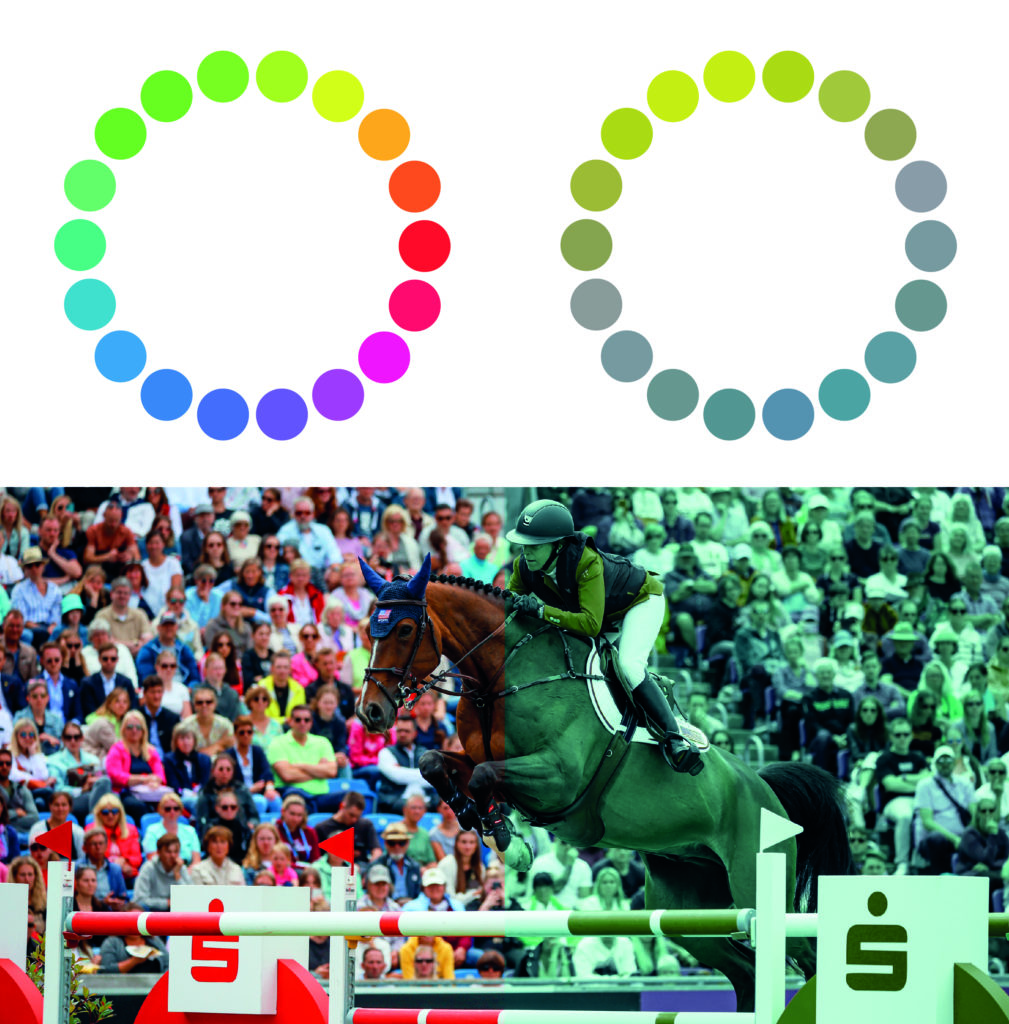
Colors
He sees in colour but he doesn’t see the same gradient of colours as humans. We think he’s able to see yellow and blue very well, different gradients of white and some other bright colours but not red and orange. In fact, he has dichromatic vision. This different way of seeing colours must be considered when building jumps because some combination of colours will make it difficult for the horse to differentiate between the ground and the jump on take-off. It is useful to have poles at the base of the jump which are a different colour from the rest of them and it would be better for this colour to be bright to allow the horse to better judge the distance to the jump.
The full article is excerpted from Cavalli&Cavalieri November/December 2023:

